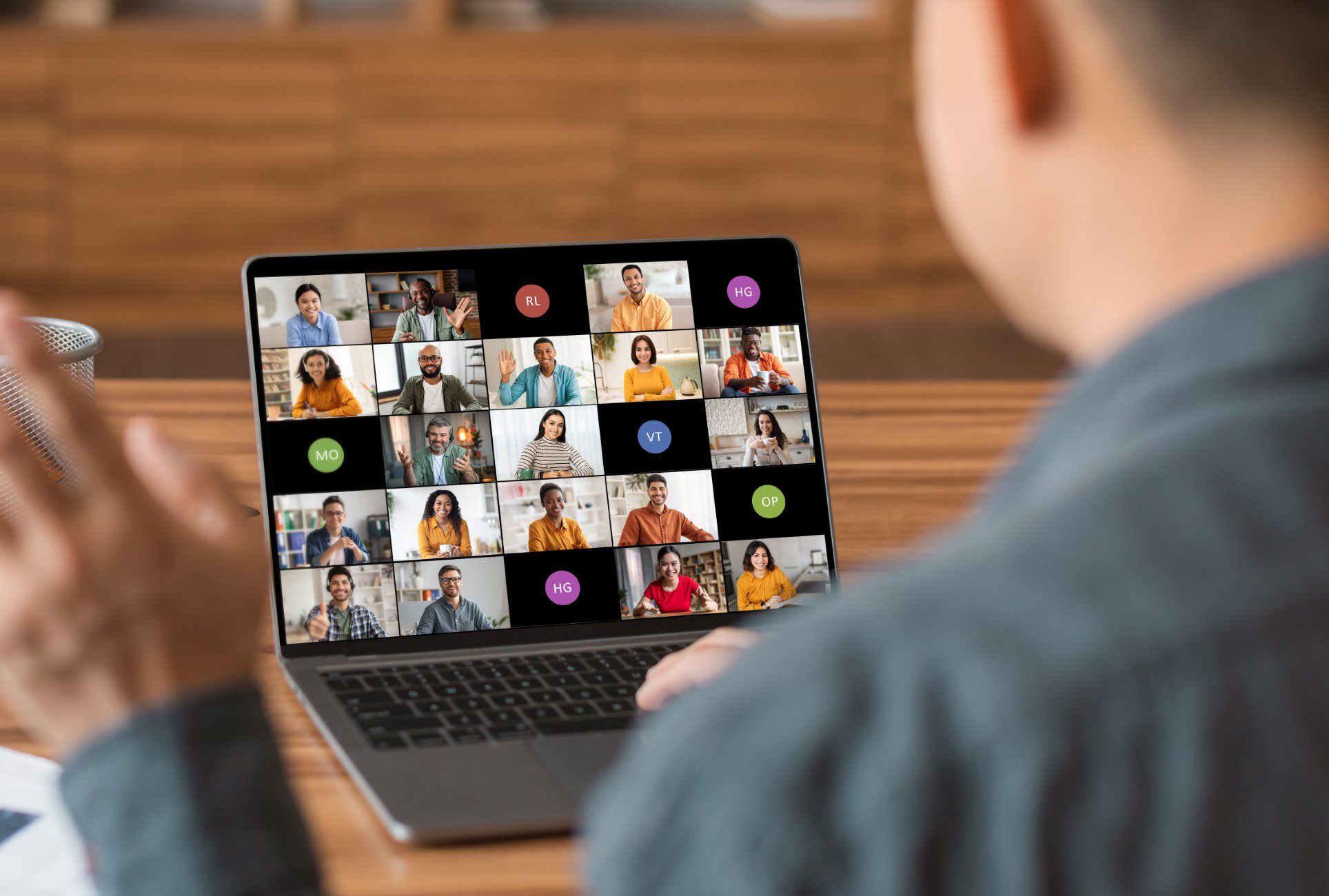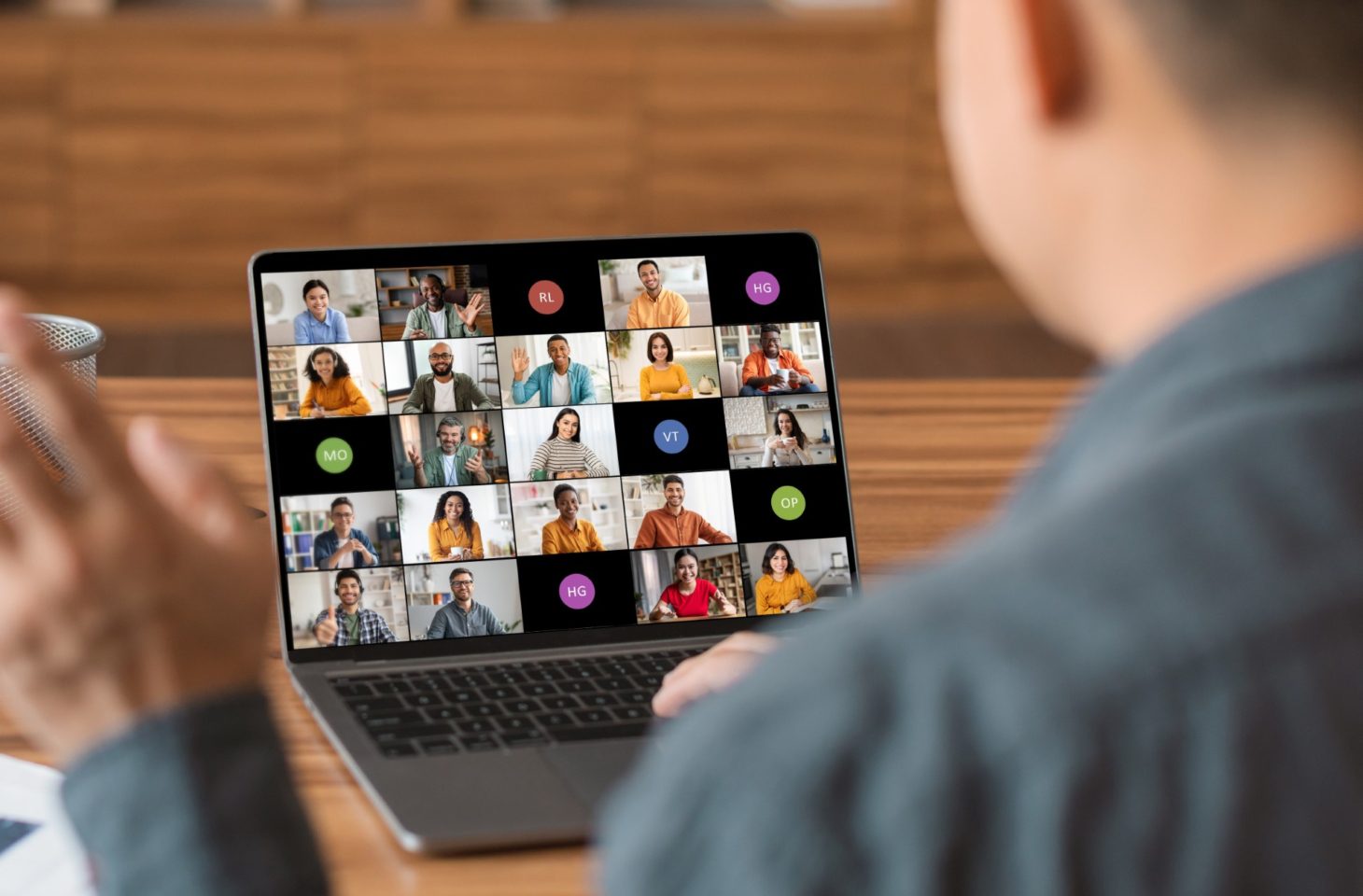Hybrid working: camera on or off? And what about security?
- October 3, 2024
- 0
Hybrid working refers to meetings via platforms such as Zoom, Microsoft Teams or Google Meet. How do you make this inclusive? Finally, we also look at the security
Hybrid working refers to meetings via platforms such as Zoom, Microsoft Teams or Google Meet. How do you make this inclusive? Finally, we also look at the security


Hybrid working refers to meetings via platforms such as Zoom, Microsoft Teams or Google Meet. How do you make this inclusive? Finally, we also look at the security aspect of hybrid working.
Camera on or off? At! The four participants in the roundtable discussion organized by ITdaily clearly agree. Stefaan Arryn, VP People at Silverfin: “You can’t have inclusive meetings without video. Large group meetings with a speaker are different, but any meeting that requires interaction involves video.”
Sven Den Uijl, Channel Manager Benelux Smart Collaboration at Lenovo, Willem Magerman, CTO at Dilaco and Andreas Van Puyenbroeck, Category Manager North West Europe at HP, clearly nod their heads. They all find the word “inclusivity” extremely important.
“The face is an extremely important part of the story,” says Den Uijl.
Fortunately, technology is evolving rapidly and a smart meeting room or high-resolution webcam in a laptop is now the norm. “A good picture is important, but so is the sound. The entire package has to be right. Companies need to invest in hardware for their employees so that dialing in from home is no longer a disadvantage,” says Van Uijl.
A good picture is important in a video call, but so is the sound. The entire package has to be right.
Sven Den Uijl, Channel Manager Benelux Smart Collaboration at Lenovo
A decent webcam and headset work wonders, but the meeting room itself is often the limiting factor. The only disadvantage: the employees who come to the office are not affected. It is the home workers who bear the consequences.
“Today, technology is so advanced that thanks to smart innovations and AI, everyone can be perfectly visualized for an inclusive conversation. If you don’t invest in it, you’ll get a great image for everyone in the office, while those working from home will see a large room without being able to notice details like facial expressions.”
The only disadvantage, according to Den Uijl, is that organizations today are not investing enough in this area. “It is often the more expensive solutions that ensure that someone working from home can optimally interact with everyone in the office.”
What is the right solution now? According to Van Puyenbroeck, this is an arrangement where people working from home feel comfortable enough to actively participate in the conversation. “Is there a limited budget? Then you have to make the best of it to set that threshold as low as possible.”
Both Van Puyenbroeck and Den Uijl also point out the possibilities of “measuring” a meeting room. Thanks to telemetry data via the camera, the IT team receives a clear overview of how often each room is used and what the average occupancy is,” says Den Uijl.
“How well is the hardware used? This is valuable data for optimizing your spaces and providing the right budget for future investments. “
Magerman is happy to join the debate and notes that the technology doesn’t always work perfectly. “In our office we have smart meeting rooms that track the speaker via video. Although this is inclusive, it sometimes causes frustration. Suppose someone coughs in front of you, the camera detects sounds and changes focus. Result: The person is the center of attention and ashamed.”
Arryn believes technology is important, but also likes to point out inclusivity here. “Say a team meets in the office every Tuesday, but one employee is based in London and always needs to dial in. That person could then feel left out. We overcome this problem by allowing multiple people on the team to call from elsewhere, rather than necessarily being expected at the office. This is also important to notice in good time.”
Expensive technology is not always necessary for inclusive meetings.
Stefaan Arryn, VP People at Silverfin
“Inclusive meetings don’t always require expensive technology,” says Arryn. Everyone in a meeting room dials in separately and turns on their camera. This is much more inclusive for remote workers. Make sure everyone in the room presses mute. One person unmutes and connects to the meeting room’s central microphone. That often works well.”
How long can meetings last? “45 minutes,” says Den Uijl. “You can use the remaining 15 minutes for a pit stop or to briefly go through your emails.” Magerman agrees. “For us it’s 50 minutes, no more is allowed.”
Are physical meetings always better than virtual ones? “I don’t think so,” Arryn says. “Virtual meetings are more punctual. They almost never go out.”
Den Uijl also points out the flexibility of virtual meetings. “Today you can easily follow a meeting on foot or in the supermarket. You may find it difficult to take notes, but an AI assistant like Copilot in Microsoft Teams will help you with it. In a way, that also contributes to inclusion.”
From cameras and meeting rooms to securing IT hardware at home or on the go. Has it become much more difficult today? “Working from anywhere is not a big challenge,” says Magerman. Your cloud environment and Bring your own device (BYOD) is much more crucial. So we focus more on what they do Data-centric security call. Security tracks the data. Trying to secure an endpoint is no longer possible today.”
Working from anywhere is not so much the challenge. Your cloud environment and Bring your own device (BYOD) is much more crucial.
Willem Magerman, CTO at Dilaco
The home network or working via the WiFi of a coffee house or McDonald’s is no longer a problem for companies today Zero trust embrace. “We always assume that it is an unreliable network,” says Magerman. “It is unreliable until it is verified. The level of access depends on the extent to which we can verify that the workplace is safe.”
Van Puyenbroeck points out that many customers today take endpoint security for granted. “However, there is still a lot to be done in the factory and in development to get to the level we are at now.”
He welcomes the fact that Zero Trust is increasingly becoming the norm. “It is extremely rare for a hack to occur purely through hardware penetration. 99 percent of all successful hacks are the result of human error. Phishing remains a major problem and further training and awareness is needed.”
Magerman agrees with this opinion, but insists on meaningful training. “Is someone putting a USB stick in their laptop that has never been used in the company before? A pop-up then appears automatically warning of the associated dangers.”
It is extremely rare for a hack to occur through pure hardware penetration.
Andreas Van Puyenbroeck, Category Manager Northwest Europe at HP
“Our most popular notification is one in Outlook that alerts you when you want to send a trusted document outside of the work environment. I have maybe 24 people calling Bart, only a few of whom are colleagues. If I accidentally send it to the wrong beard it could be a disaster. Such a pop-up is a good learning opportunity, in addition to the traditional training sessions on security and phishing.”
Hybrid working has caused the IT team to rethink its security tools. At the same time, they must always be up to date, whether you are in the office, at home or on the go. Zero Trust is the standard. You are always insecure until proven otherwise.
There is still a lot to do with hybrid meetings. The technology for inclusive meetings exists today, but limited budgets often limit proper implementation. Inclusivity is the most important word to remember in a hybrid work environment. Lower the barrier to interactivity and get the most out of every budget.
This is the second editorial article in a three-part series on the topic of hybrid works. Click on our topic page to see all roundtable articles, the video and our partners.
Source: IT Daily
As an experienced journalist and author, Mary has been reporting on the latest news and trends for over 5 years. With a passion for uncovering the stories behind the headlines, Mary has earned a reputation as a trusted voice in the world of journalism. Her writing style is insightful, engaging and thought-provoking, as she takes a deep dive into the most pressing issues of our time.